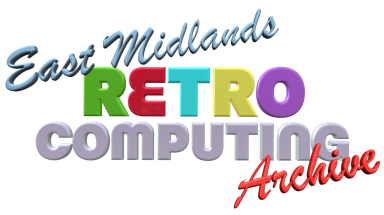Our Collection
We have a variery of vintage computers, consoles and other devices on display. Here are some examples of them.
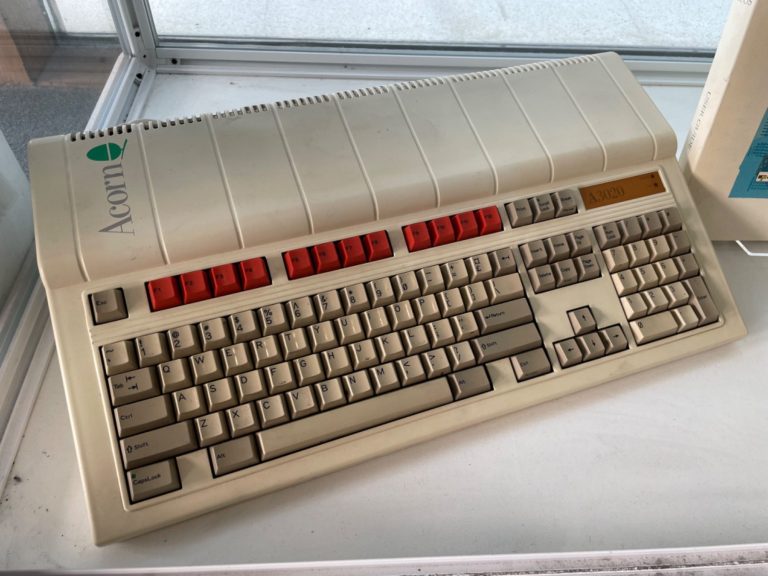
Acorn
Archimedes A3020
(1992)
One of the final machines to be released in Acorns' Archimedes range, which had seen the company pioneer the use of RISC (Reduced Instruction Set Computing) CPU architecture. The CPU was an ARM 250 (which at the time stood for Acorn RISC Machine) running at 12 MHz; an ancestor of the processors still found in today's devices such as iPhones. The A3020 was targeted at educational markets, while a slightly different machine (the A3010) was launched at the same time and aimed at home users. A visible distinction between the two systems was that the A3020 continued to use the familiar red function keys of the Acorn's older BBC Microcomputer series. Both systems, however, retained a link to this heritage by shipping with BBC Basic in ROM.
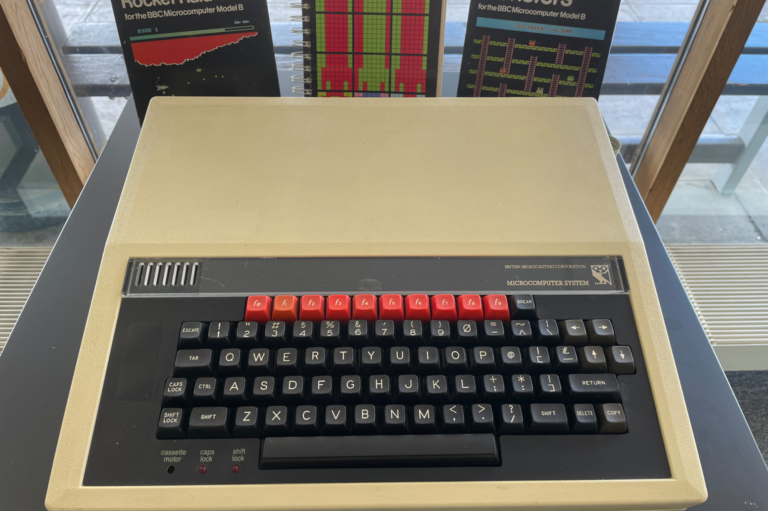
Acorn
BBC Micro Model B
(1982)
The Model B was an early member of the BBC Microcomputer System series, which were designed and built by Acorn Computers for the British Broadcasting Corporation's Computer Literacy Project. The Model B had 32K of RAM (as opposed to the 16K offered by its predecessor, the Model A), and was particularly noted for its expandability and the quality of its operating system and BASIC interpreter. The systems were extremely popular in education, and could regularly be found in schools, colleges and universities into the early 1990s. Notably, 'BBC Microcomputer' moniker was also sported by models in Acorn's later Archimedes range.

Apple
iMac G3
(1998)
The first computer in the iMac range, marking a dramatic change in direction of the Macintosh product line following Steve Jobs return to the company in 1997. The system used a PowerPC G3 chip, with the original model running at 233MHz and shipping with 32MB RAM. One of the obvious distinguishing features of the system was its appearance. Originally released with a 'bondi blue' casing, the G3 was ultimately available in 13 different colours. From a technical perspective the system was also forward-looking, with the notable abandonment of floppy disk storage (still very much a standard feature on other machines of the era), the exclusive inclusion of USB ports (i.e. abandoning older style ports), and an internal modem as standard. The original iMac had a tray-loading CD drive, whereas this later one has a slot-loading mechanism.
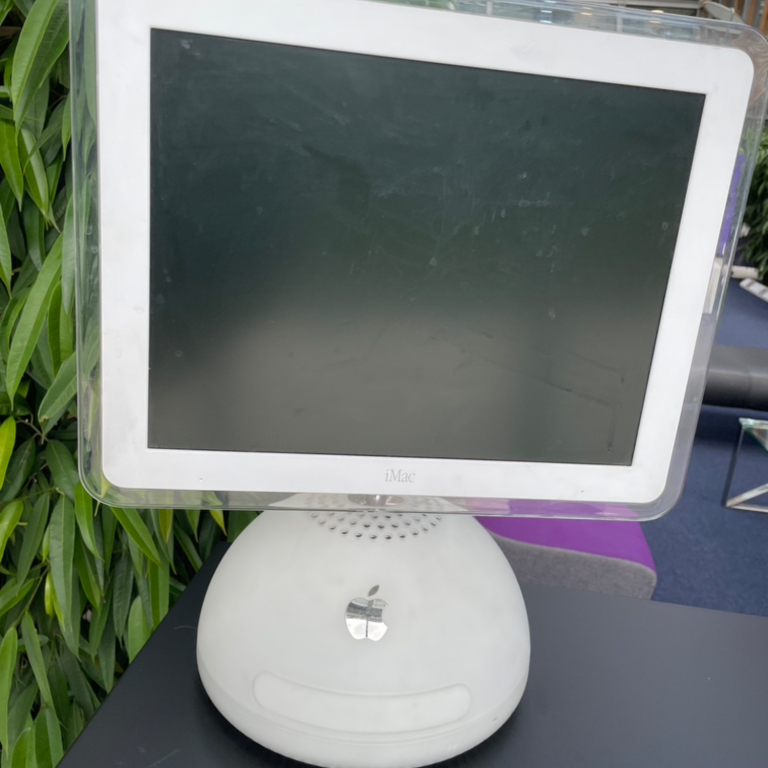
Apple
iMac G4
(2002)
Based upon the PowerPC G4 processor, this version of the iMac was visually distinctive through its use of the flexible arm that held the screen, enabling it to be positioned rather like an anglepoise lamp. Notably, the machine was not actually sold as the iMac G4; it was simply known as the iMac (or 'the new iMac', to distinguish it from the previous iMac design). The name 'iMac G4' was applied retrospectively, once the machine had itself been superseded by a new design.
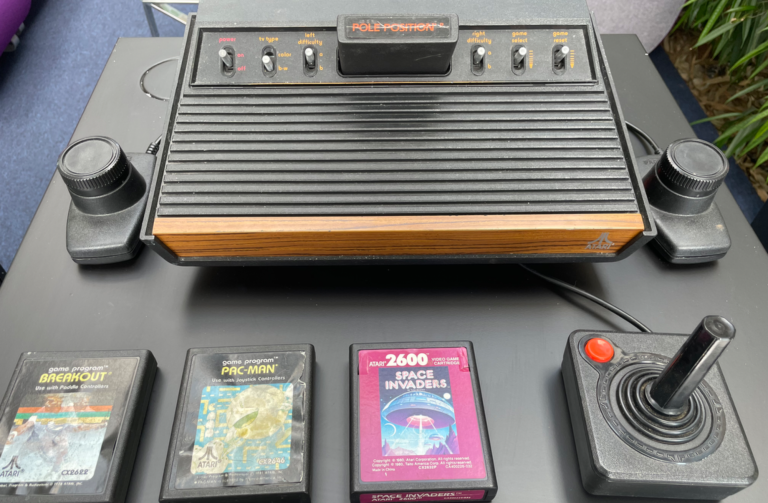
Atari
Video Computer System
(1977)
The Atari VCS (later known as the 2600) popularised the use of cartridge-based games as opposed to dedicated TV game hardware with all games built in. Originally shipped with a tank and plane warfare cartridge (Combat), the VCS ultimately played host to the hundreds of original games, as well as arcade classics of the day such as Space Invaders and Pac-Man. Variants of the 2600 console were produced until 1991, with over 25 million being sold.
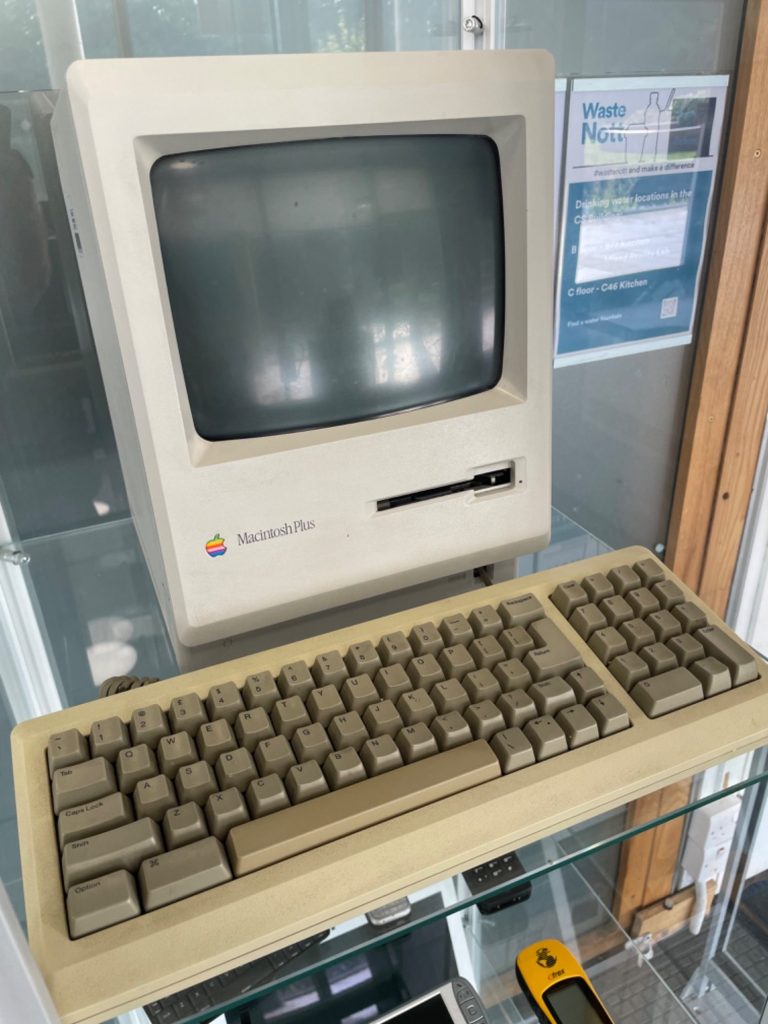
Apple
Macintosh Plus
(1985)
The Macintosh Plus, released in 1985, and replaced the original Macintosh 128K and 512K models. The Mac Plus increased the memory to 1MB and added support for SCSI hard drives, but otherwise was similar to its predecessors keeping the same form factor and it was possible to upgrade earlier model by replacing the logic board and rear case. Like many computers of that time period (such as the superior Atari ST), the Mac Plus used the Motorola 68000 CPU.
Tales from the development of the original Macintosh can be found at folklore.org.
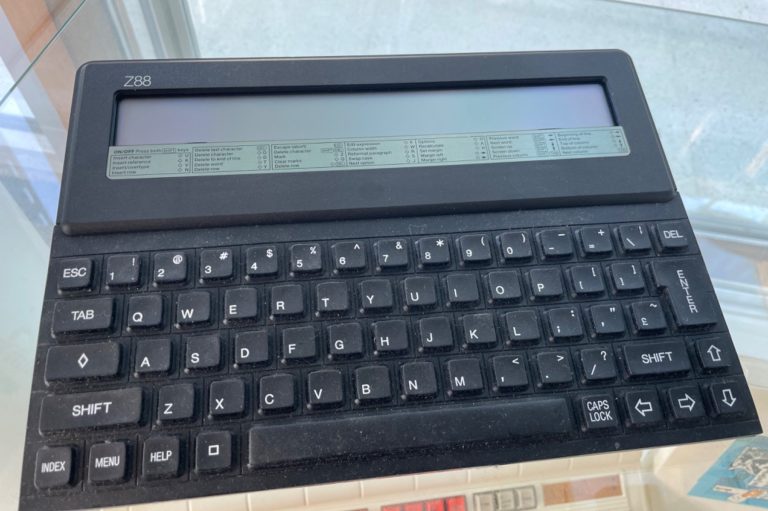
Cambridge Computer
Z88
(1988)
Brainchild of British personal computing pioneer Sir Clive Sinclair, the Z88 was produced by his new company Cambridge Computer Ltd after Sinclair Research was sold to Amstrad in 1986. The Z88 saw a return to Sinclair's use of the Z80 CPU, and the return of the rubber keyboard. In this case, however, the keyboard had a distinct advantage, making it very quiet in operation. The Z88 ran a wordprocessing / spreadsheet / database application called Pipedream, and offered a version of BBC Basic.

Commodore
16
(1984)
The Commodore 16 was released in 1984 and intended as an entry-level home computer to replace the popular but aging VIC-20. Taking its name from its 16K RAM, the C16 used a 6502-compatible 8501 CPU, and was originally sold in the UK as part of a Starter Pack including cassette unit and games for £139.99. It was accompanied in the market by a more powerful, but compatible, machine; the Commodore Plus/4 (which notably departed from the style of casing used by the VIC-20, C64 and C16).

Commodore
64
(1982)
The Commodore 64 is one of the most popular home computers ever produced, described by the 2001 Guinness Book of Records as the most "prolific computing device ever manufactured" and selling around 30 million units until it ceased production in 1993. Taking its name from its 64K of RAM, the machine was notable for fast, sprite-based graphics and excellent (for its day) musical capabilities delivered by the Sound Interface Device (SID) chip. Later variants included the SX64 (portable, with inbuilt screen and 5¼ disk), C64C (redesigned casing), and C64GS (cartridge-only games console version). Its successor, the Commodore 128, had a C64 compatibility mode (accessed via the command ‘GO 64’).
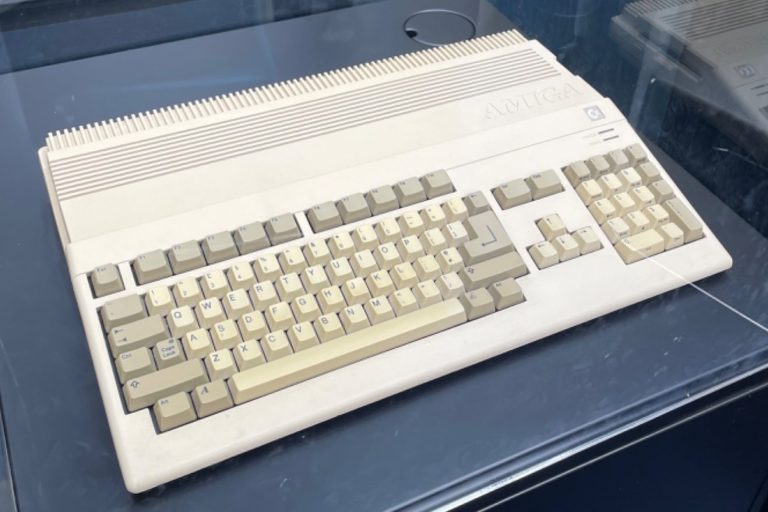
Commodore
Amiga 500
(1987)
Following on from the original Amiga 1000 from 1985, the A500 was the most powerful home micro of its era. The Amiga range was notable for offering 4,096 colour graphics and synthesiser sounds, leading to significant popularity as a games machine. Other capabilities, such as the graphical user interface and a full multitasking operating system, set it apart from other home (and business) computers of the day. The A500 had a Motorola 68000 processor (7.14Mhz) and 512K RAM.

Dragon Data
Dragon 32
(1982)
In many ways a Welsh clone of the Tandy TRS-80 Color Computer, the Dragon 32 was particularly popular in the Christmas of 1982 ... thanks in part to the short supply of the ZX Spectrum. In common with the Tandy system, it used a Motorola 6809E processor, setting it apart from the many Z80 and 6502-based peers. Other (Spectrum-beating) features were the fact that it had Microsoft Extended BASIC in ROM and a proper keyboard. One of the major software houses that produced games for it was Cornwall-based Microdeal. Many of Microdeal's games were very respectable conversions of classic arcade games of the era, as well as many titles involving their own company mascot, Cuthbert. All was good, as long as you liked a green background...
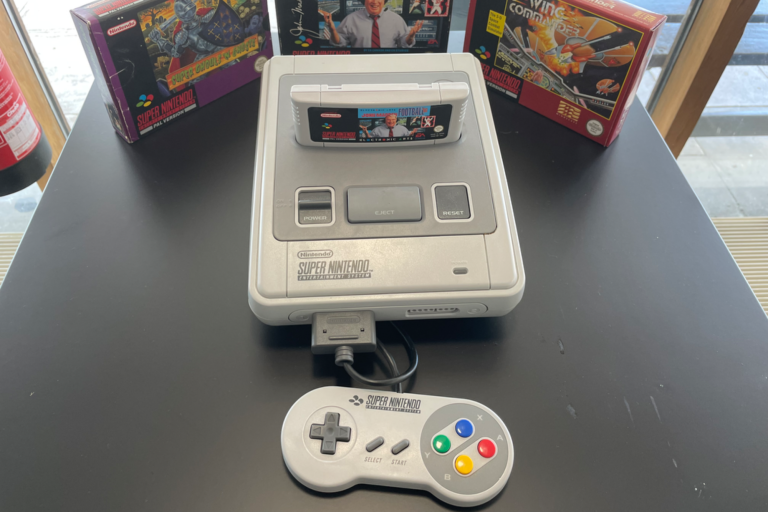
Nintendo Super Nintendo Entertainment System (1992)
Nintendo’s successor to the original 8-bit Entertainment System, the SNES (or Super Famicom – for Family Computer) brought Mario and co into the 16-bit era. The console had more advanced graphics and sound than its contemporaries (e.g. Sega’s MegaDrive / Genesis) and was designed such that the ROM cartridges could also include enhancement chips to boost its capabilities further (e.g. the Super FX chip in the Star Fox game, allowing the SNES to use 3D polygonal graphics). The SNES had a phased release - appearing in 1990 in Japan and South Korea, 1991 in North America, 1992 in Europe and Oceania, and 1993 in South America.

Osborne
1
(1981)
Released by Osborne Computer Corporation, the OCC 1 (to give its proper model number) was the first commercially successful portable computer. Powered by a 4Mhz Z80 processor, alongside 64K of RAM and two 5 1/4“ drives, the system ran the popular CP/M operating system. One of its notable selling points was that it came bundled with a range of popular applications (including Wordstar, SuperCalc and dBASE II) then worth around $1,500 (representing good value, given that the system itself sold for $1,795). Situated in the middle of the unit, the 5” monochrome screen displays 52x24 characters (and it was considered small even back in 1981). Weighing 10.7kg, the device was in no sense a laptop, but in its day would still qualify as airline carry-on luggage.

Philips
Videopac G7000
(1979)
The Videopac was the European version of the Magnavox Odyssey2, giving it a heritage going back to the very first games console of all (the Magnavox Odyssey). Rather less popular and less powerful than competing systems of the era (such as the Atari VCS and Mattel Intellivision), the Videopac still delivered some innovations. As you can see, it was notably different from other consoles thanks to the inclusion of a membrane keyboard. This was mainly used for game selection and entering names for hi-scores, although some cartridges were available that made more use of it (such as the Computer Programmer cartridge, which allowed assembly language programming). Other departures from the norm included some games cartridges that shipped with tabletop board games, with the Videopac element being integrated into the overall game play. Another variant of the system, the G7200, shipped with an integrated black & white screen.

Sinclair
ZX81
(1981)
The Sinclair ZX81 was released by Sinclair Research as the follow-up to the successful ZX80. It shared its predecessors characteristics of a Z80 CPU, membrane keyboard, 1K RAM, black and white display and lack of sound. The ROM, however, was doubled to 8K and the machine ran faster. Like the ZX80, it was available for purchase ready-made or in kit form. The model shown here has Sinclair's infamous 16K ram pack; notoriously prone to wobbling when keys were pressed, with the potential to crash the machine and lose all the data.

Sinclair
ZX Spectrum
(1982)
The ZX Spectrum was an 8-bit (Z80A) personal home computer released in 1982 by Sinclair Research Ltd. Originally released in 16K and 48K versions, the Spectrum became massively popular in the UK. The rubber keyboard was often described by its detractors as having the feel of ‘dead flesh’ (although it’s not clear how they knew!). The ‘Speccy’ ultimately evolved through a variety of later models including the Spectrum+ (which added a better keyboard), the Spectrum 128 (128K RAM), the +2 (integral tape drive), and +3 (integral 3-inch floppy drive). Notably, the latter two systems were released by Alan Sugar’s Amstrad, after it acquired the Sinclair brand in 1986.

Sinclair
ZX Spectrum+
(1984)
An update to the Spectrum that essentially took the 48K model and added a QL-style keyboard, enabling the Spectrum to at least in part escape the 'dead flesh’ criticism often levelled at the rubber-keyed version (although in actual fact the feel of the keyboard was still very spongy, and still very unlike proper typewriter versions found on other systems). One point to note is that the keys themselves were not glued in place, and could be easily removed with a small amount of force. Consequently, visitors to high street shops such as WHSmith and Boots (which used to sell home computers in the early 1980s) would often discover a Spectrum+ with its keys rearranged to spell out rude words (feel free to work out some possibilities!). Aside from the change of appearance, the system remained identical to the original Spectrum and so the other curiosity of typing on it, the one-touch keyword entry, still remained.
© East Midlands Retro Computing Archive
We need your consent to load the translations
We use a third-party service to translate the website content that may collect data about your activity. Please review the details in the privacy policy and accept the service to view the translations.
